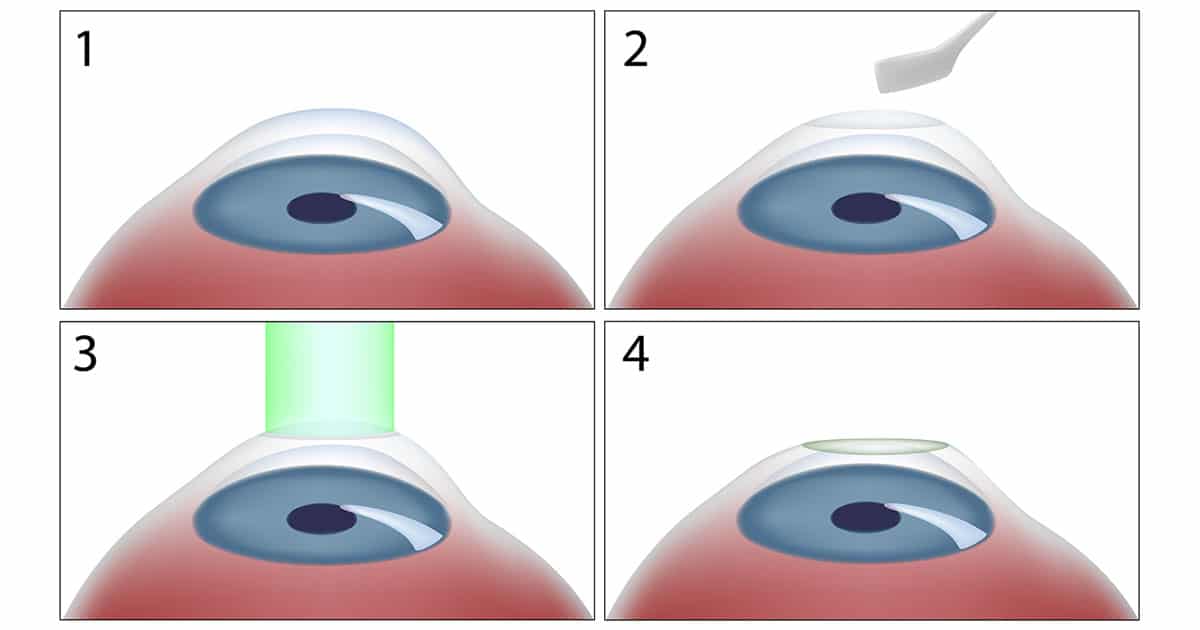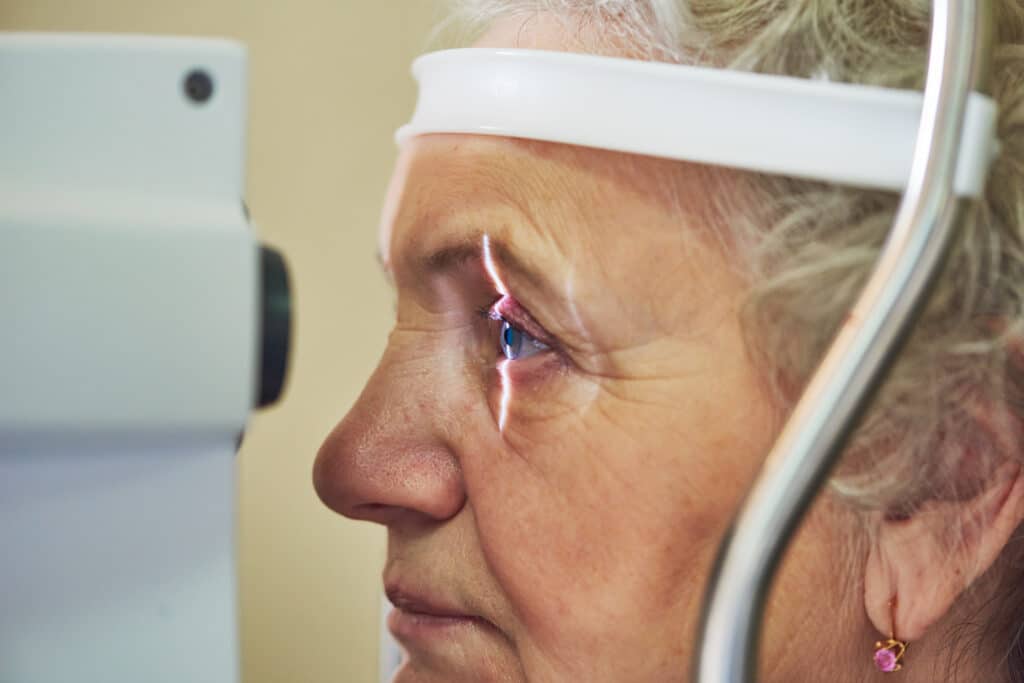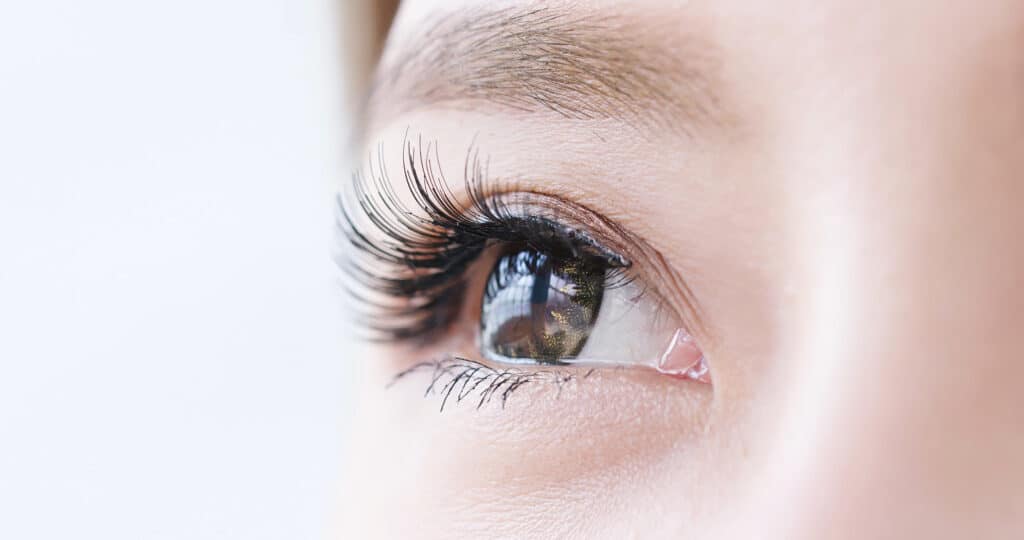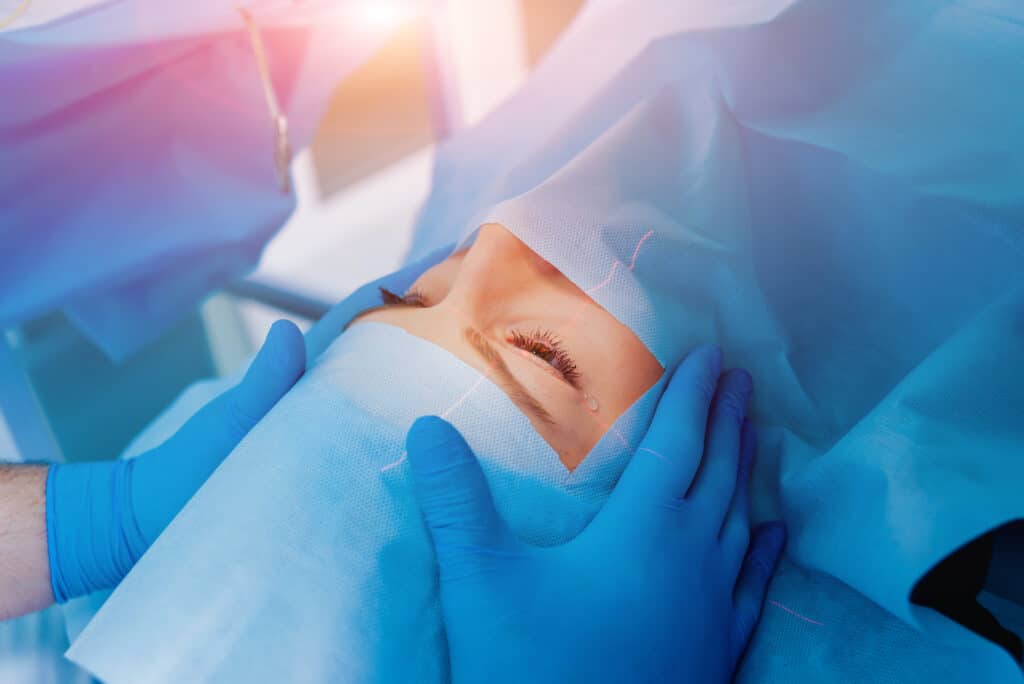PRK Eye Surgery (LASIK Alternative)
April 29, 2020
What Is PRK (Photorefractive Keratectomy) Eye Surgery?
Photorefractive keratectomy (PRK) is a laser eye surgery which reshapes the cornea, the clear front part of the eye. This allows light to focus on the retina, creating sharp, clear vision. PRK is performed with the help of a highly precise excimer laser, which is used to remove a thin layer of the cornea at its surface.
PRK surgery is a suitable treatment option for nearsightedness, or astigmatism, and works best if your vision impairment is mild or moderate. This is a highly accurate, effective, and quick procedure that typically takes between 10 and 15 minutes, in total, to complete. The laser application itself takes only a few seconds.
How Will My Vision Be After PRK?
Immediately following PRK and for the next 3-5 days, the vision will be foggy as the eye heals. Some people, who have very high prescriptions to start with, will notice that the vision is already significantly better than before the surgery. But, it will get better yet. During this healing time, driving is not recommended. Once the eye has healed, some people will notice that images are more clearly in focus up close than they are in the distance. This slowly changes over the next few weeks allowing the distance vision to come into sharp focus. The end result is clear vision every bit as clear as LASIK surgery; however, it takes more time to get to that point.
Is PRK Better Than LASIK?
PRK was the most popular refractive surgery procedure for the eyes before LASIK came along, and for some people it is still the best option. While LASIK and PRK are similar procedures intended to correct refractive error, they do have some differences. PRK reshapes the cornea at the surface. LASIK is performed by creating a thin corneal flap and reshaping the cornea beneath. When comparing PRK vs LASIK, it is important to note that both laser treatments are effective and produce a similar result; however, there are a few trends beyond the procedure itself that are meaningful for patients:
- In some instances (for example in the presence of deep corneal scars) LASIK is not advisable. PRK is safer and more effective than LASIK in these situations.
- LASIK is typically more comfortable during the early healing period.
- PRK generally has a longer recovery time.
The best laser eye surgery for you may come down to your personal factors, such as corneal health and thickness, pupil size, and degree of refractive error. When weighing the options of LASIK vs PRK, an eye surgeon can help you determine which procedure is the safest and most reliable option.

Is PRK Surgery Painful?
PRK surgery itself is not painful. The eyes are numbed entirely with a topical anesthetic eye drop. During the surgery, people cannot feel anything that is happening while the laser is reshaping their cornea. They see a flurry of lights but feel nothing.
Following PRK the eyes may feel irritated and sensitive to light. This starts once the numbing drops have worn off (20 minutes after surgery) and lasts 3-5 days until the eyes have healed. After the PRK surgery is complete, the surgeon will place a Contact Lens over the eye to act as a shield protecting the eye as it heals. The Contact Lens will help to decrease the discomfort otherwise felt, and help the eye to heal faster. Instead of taking the contact lens out every night, like a normal lens, this Bandage Contact Lens stays in the eye until the surgeon removes it once the eye has healed, 3-5 days after surgery. For some people, the irritation following PRK is mild and does not stop them from doing the things that they would normally do. Others will prefer to stay inside in dim light until the eyes heal.
How Long Does It Take to Recover from PRK Eye Surgery?
Recovery timelines for PRK eye surgery are not the same for everyone, as it may take between six weeks and six months for the vision to fully recover from the procedure. Keep in mind that in rare cases, the recovery time can extend up to a year. Regardless of the duration, the healing process consists of several phases for all patients.
Post-Surgery
Vision will be improved immediately following surgery, but it will get even better in the coming weeks.
Days 1 to 4 After Surgery
As the effects of the numbing eye-drops wear off, people may experience moderate discomfort in the eye. Other side-effects can include sensitivity to light, tearing, blurry vision, a sense of burning or dryness, and itching. These symptoms may last for three to five days as the eye heals. Medicated eye drops are used during this time to prevent infection and inflammation. Discomfort during this phase is common and usually can be managed with over-the-counter painkillers and preservative-free artificial tears. Patients should avoid exercise during this time, and wear polarized UV blocking sunglasses while outside.
Day Five After Surgery
Around day five, the surface of the cornea will complete its healing. The surface heals from the outside in, leaving the center of the cornea to heal last. When it does, both vision and comfort level improve. At this time the contact lens is removed from the eye. Though the vision and comfort level are significantly better at this point, they will improve further in the coming weeks.
Weeks 2 to 6 After Surgery
The vision has improved significantly at this point and people are able to do all of the things that they would normally do; however, the vision will continue to improve even more in the coming weeks.
Once the surface cells of the eye have healed, they will continue to shift and change shape for the next few weeks until they are stable. During this time the vision typically changes. It starts off, often slightly more nearsighted than planned, then over the next several weeks shifts to deliver crisp vision.
During this time there are a few things that people can do to improve their healing time and ensure the best outcome. Medicated drops are used to reduce inflammation. This helps to prevent scarring (also referred to as corneal haze) which can limit the vision and is often slow to resolve. Another way to prevent haze is to wear UV blocking, polarized sunglasses whenever going outside. It is also important during this time to continue using preservative-free artificial tears often (6-8 times per day). This is because as the eye heals, the lubricating eye drops protect the cornea from micro-trauma produced by eyelids blinking. This will help the eye heal faster and see better quicker.
Months 3 to 6 After Surgery
The vision clears up and stabilizes. People can go on with their life doing all of the things that they would normally do, only without having to depend on glasses and contact lenses.
People will often have four or more post-op visits while they go through this healing process. Typically, people see their doctor on the first day after surgery, again 3-5 days later, and at 1, 3, and sometimes 6 months post-op. It is important that people let their doctor know if they have any problems between visits such as decreased vision, pain, redness, or any other troubling eye issue. Yearly routine eye exams are recommended after the post-op healing period has resolved. This allows the doctor to monitor the ongoing health of the eye.
The Path to Clearer Vision Starts Here
Can PRK Laser Eye Surgery Correct Astigmatism?
Yes, PRK (and LASIK, for that matter) is an incredibly effective way to correct astigmatism. PRK to treat astigmatism has been FDA-approved since 1997, and most patients receive some degree of astigmatism treatment during their procedure. The decision to treat astigmatism with PRK is individualized. Some patients will benefit more from LASIK or SMILE, others from PRK. The amount and axis of the astigmatism, as well as the shape and thickness of the cornea are a few of the parameters that go into deciding which treatment is best for a patient.
How Much Does It Cost for PRK Eye Surgery?
For the majority that choose to have PRK performed as elective surgery, the procedure is usually not covered by health insurance. To have both eyes treated, PRK surgery typically costs between $3,500 and $6,000 but fluctuates on a number of variables such as the eye surgeon you choose and where you live. Other factors that may impact the price of the procedure include advanced diagnostic testing, materials and equipment used during the procedure, post-surgery medicine, warranty offers, and follow-up fees. Many clinics offer financing options to help ease the burden of payment over time. Though generally comparable, the cost for PRK may be slightly more or less than LASIK in different centers.
Conclusion
PRK (Photorefractive keratectomy) is a time-tested and trusted form of vision correction that produces highly accurate results and is one of the most commonly performed laser vision correction treatments next to LASIK and SMILE. Because it has a longer and more intensive recovery time than LASIK, it may not be the preferred surgical procedure for everyone; however, in certain instances, when LASIK and SMILE are not recommended, PRK is often the ideal vision correction procedure.
If you are considering corrective eye surgery to improve your vision, the Heart of Texas Eye Institute is here to help you make an informed decision that fits your unique needs. Please contact us for a free consultation, and we will help you get on the path to enjoying life without visual impairment getting in the way.


